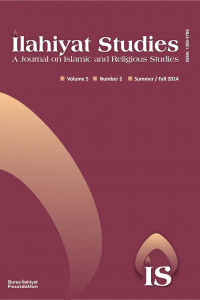Abstract
First paragraph: In the heated discussions about the relationship between religion and science, Stephen Jay Gould’s (d. 2002) offering, known as NOMA “Non-Overlapping Magisteria,” has been met with a myriad of reactions. His formula had suggested that, as completely two distinct realms, religion and science address two complementary aspects of human knowledge, the first about the ultimate meaning of universe and moral values and the other about the empirical outcomes. Whoever wants to mix these two would be mixing, in Gould’s own words, “apples and oranges.” Leaving aside his emotional description of the subject in Rocks of Ages, along with occasional statements such as “with all my heart,” “brings tears to my eyes,” etc., Gould’s main thesis hardly conforms with the historical development of religious disciplines. The history of religious ideas is a history of rationality; one need not be a specialist in a religious discipline to see that every religious standpoint applies certain mechanisms to justify its fundamental principles on a rational basis. Rationality brings about the doctrine of the unity of truth, whether it comes from divine intelligence or the human mind, a notion that underpins the overall metaphysical and epistemological structures in the Medieval Period. As Quentin Skinner elaborates, rationality is the crucial criteria for us to recognize the range of explanatory instruments in a belief system. To wit, religion without rationality is but a massive vacuum no one can make sense of. Once this fact is observed, it is principally impossible to strip religious discourse of its ontological indications, restricting it only to morality. Thus, Gould’s stance is, in the first place, prone to systematical approaches which view religion in the given context. And in fact, it has been seen as such. The subject of this review can be seen as a telling contribution in this regard.
Abstract
In the heated discussions about the relationship between religion and science, Stephen Jay Gould’s (d. 2002) offering, known as NOMA “Non-Overlapping Magisteria,” has been met with a myriad of reactions. His formula had suggested that, as completely two distinct realms, religion and science address two complementary aspects of human knowledge, the first about the ultimate meaning of universe and moral values and the other about the empirical outcomes. Whoever wants to mix these two would be mixing, in Gould’s own words, “apples and oranges.” Leaving aside his emotional description of the subject in Rocks of Ages, along with occasional statements such as “with all my heart,” “brings tears to my eyes,” etc., Gould’s main thesis hardly conforms with the historical development of religious disciplines. The history of religious ideas is a history of rationality; one need not be a specialist in a religious discipline to see that every religious standpoint applies certain mechanisms to justify its fundamental principles on a rational basis. Rationality brings about the doctrine of the unity of truth, whether it comes from divine intelligence or the human mind, a notion that underpins the overall metaphysical and epistemological structures in the Medieval Period. As Quentin Skinner elaborates, rationality is the crucial criteria for us to recognize the range of explanatory instruments in a belief system. To wit, religion without rationality is but a massive vacuum no one can make sense of. Once this fact is observed, it is principally impossible to strip religious discourse of its ontological indications, restricting it only to morality. Thus, Gould’s stance is, in the first place, prone to systematical approaches which view religion in the given context. And in fact, it has been seen as such. The subject of this review can be seen as a telling contribution in this regard.
Keywords
Details
| Primary Language | English |
|---|---|
| Subjects | Religious Studies |
| Journal Section | Book Reviews |
| Authors | |
| Publication Date | July 8, 2015 |
| Submission Date | July 13, 2015 |
| Published in Issue | Year 2014 Volume: 5 Issue: 2 |


